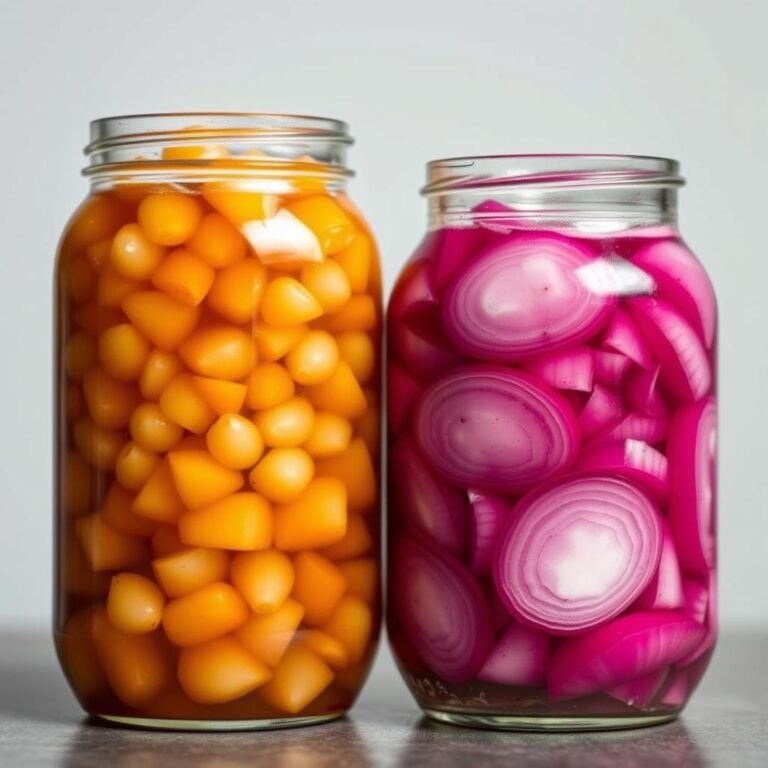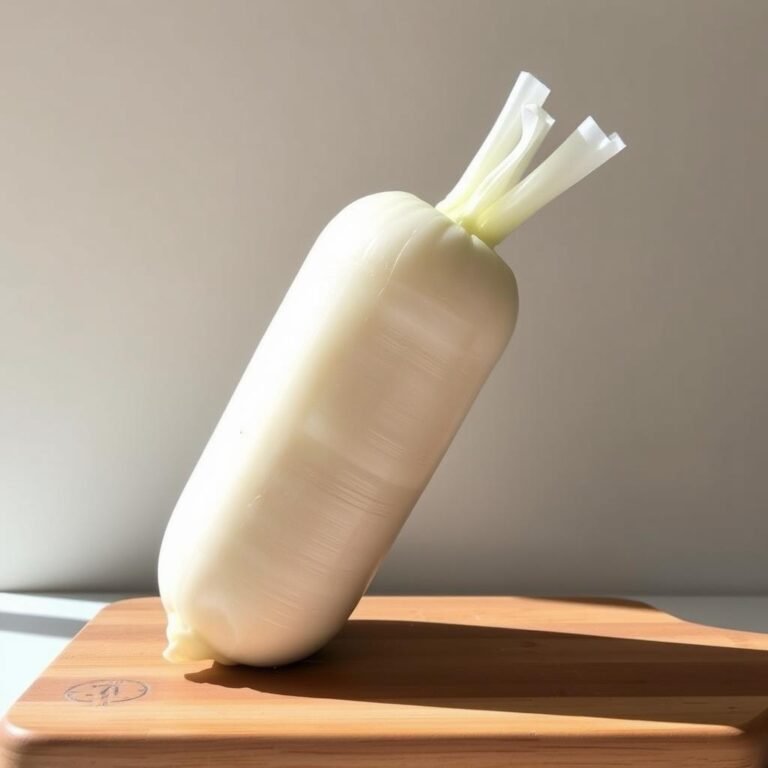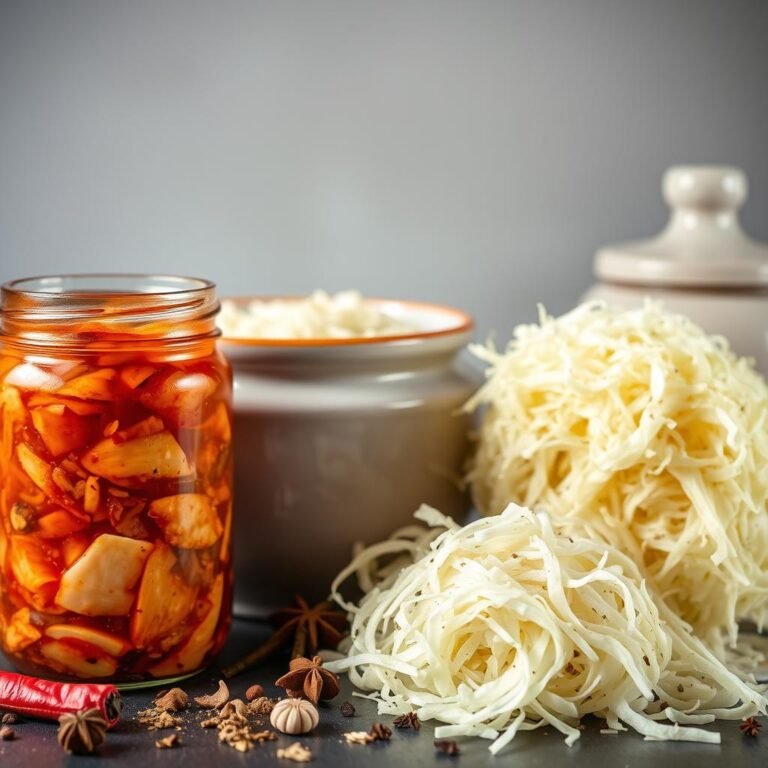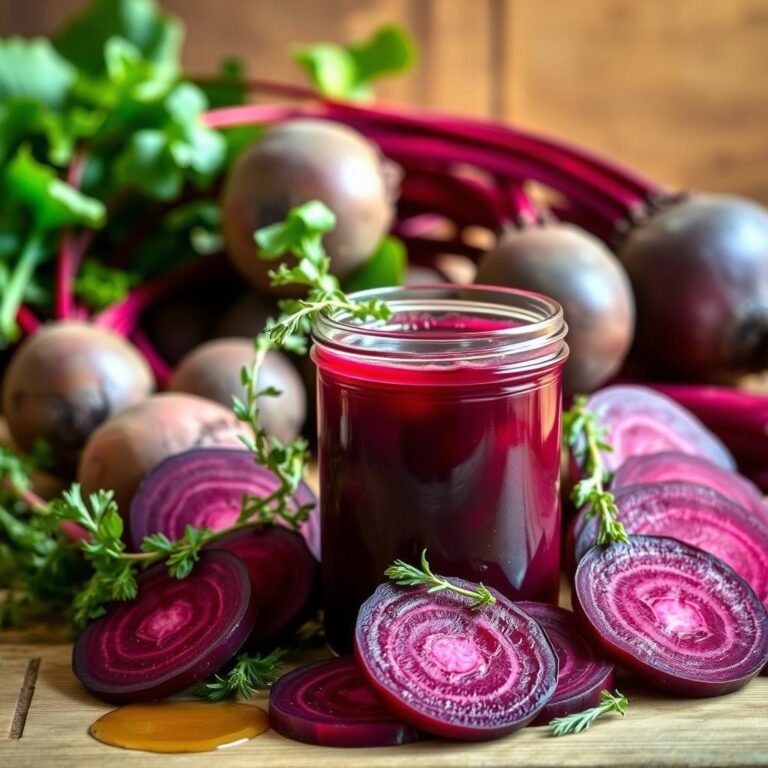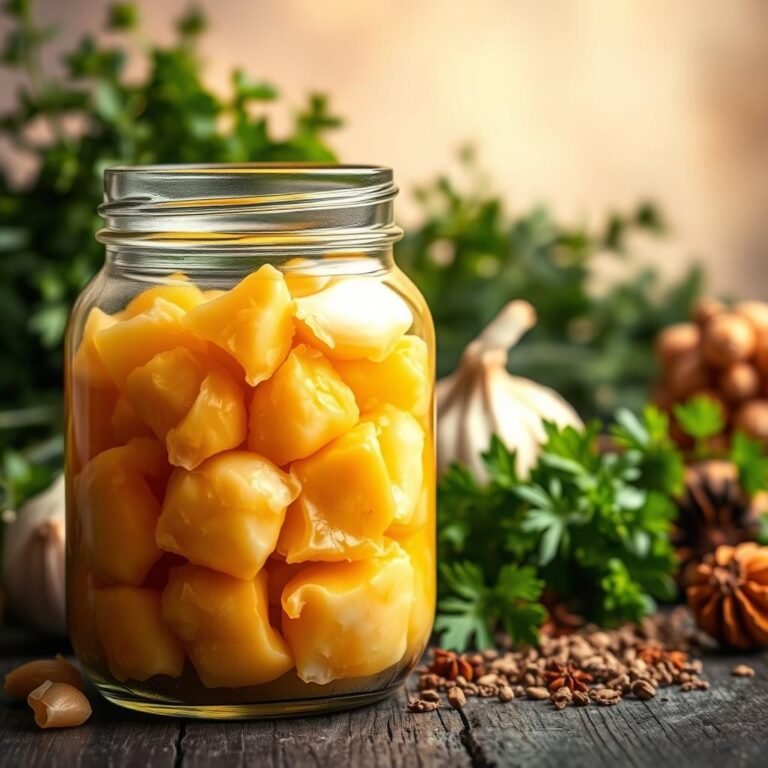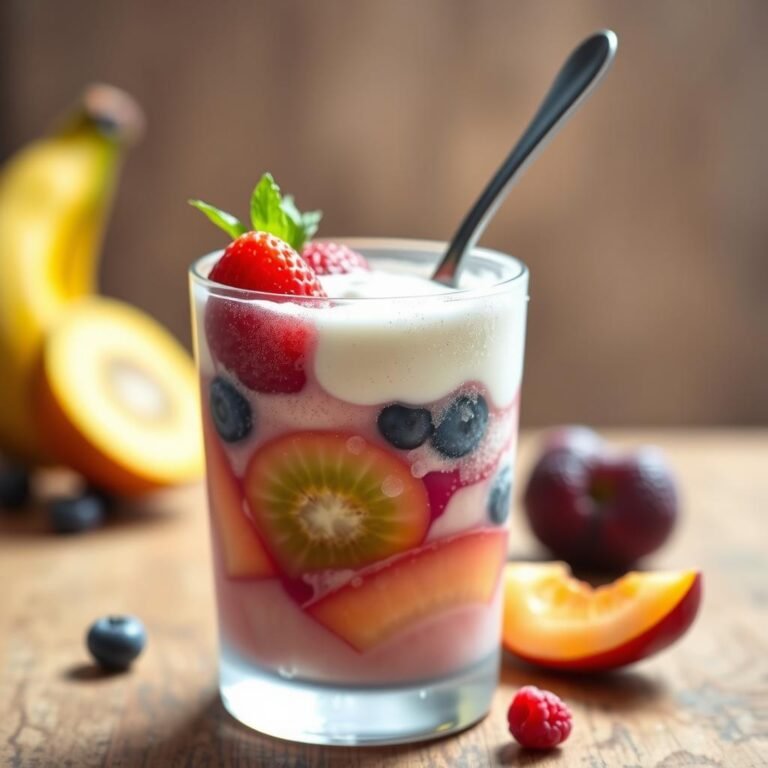Fermented Cauliflower Recipe for a Healthy Stomach
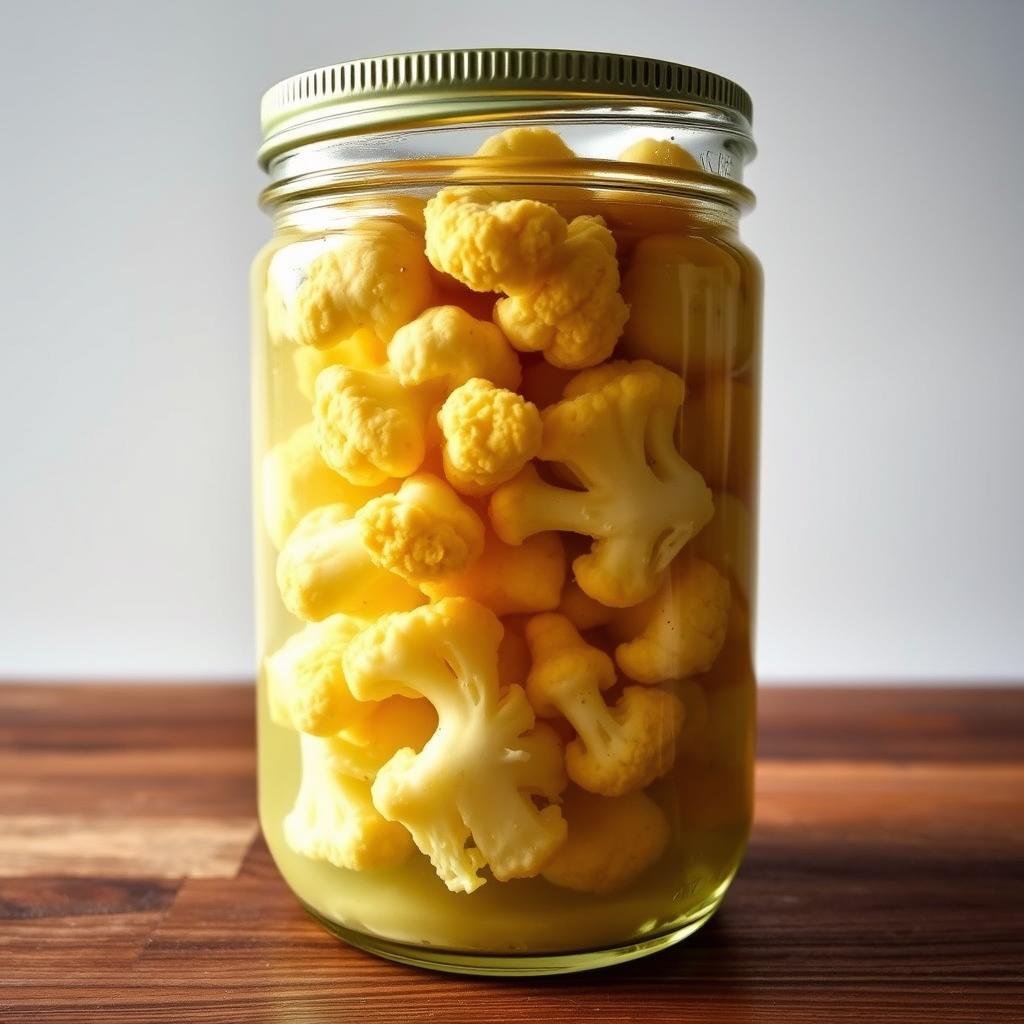
Want to improve your digestion with a tasty food? Try this fermented cauliflower recipe. It’s not only good for you but also easy to make at home. It’s a great way to add health benefits to your meals.
Making fermented cauliflower is simple. You need just a few things. With a bit of time, you can make a healthy food item. Start exploring lacto-fermented cauliflower today and see how fun it is.
For more details and tips, check out this guide on fermented cauliflower.
What is Fermented Cauliflower?
Fermented cauliflower is a type of homemade vegetable. It goes through a process called lacto-fermentation. This method keeps the vegetable fresh and makes it taste better and more nutritious.
Understanding Fermentation
Fermentation breaks down carbs with the help of bacteria and yeast. In lacto-fermentation, good bacteria in veggies like cauliflower are key. They turn the cauliflower’s sugars into lactic acid.
This acid acts as a natural preservative. It also gives the cauliflower a tangy, sour taste. For more info, check out this link.
Health Benefits of Fermented Foods
Eating fermented foods like cauliflower is good for your health. They boost your gut health. The probiotics in these foods help your digestion and nutrient absorption.
They also increase vitamins and minerals in your body. Adding these foods to your diet can greatly improve your health.
Fermented cauliflower is tasty and good for your gut. It’s a great snack. The interest in making these foods at home shows their many benefits.
If you want to learn more about fermentation, start with the basics. This guide will help you understand the process and its health perks.
Ingredients You’ll Need
To make perfect lacto-fermented cauliflower, you need fresh produce and spices. Choosing the right ingredients makes the ferment taste better.
Cauliflower and Essential Spices
Fresh cauliflower is the main ingredient. It should be firm and without blemishes. Mustard seeds and peppercorns are key spices.
They give the cauliflower a unique taste. These spices keep the flavor balanced.
The Role of Salt in Fermentation
Salt is very important in fermentation. Use non-iodized salt like sea salt or kosher salt. It stops bad bacteria and helps good microbes grow.
Salt also keeps the cauliflower crunchy. It’s a must for all easy fermented foods.
Optional Additions for Flavor
You can add things to change the taste. Garlic makes it richer, and peppers add spice. Dill and bay leaves give a fresh taste.
These let you make the cauliflower your own. You can make it taste unique and delicious.
Step-by-Step Fermentation Process
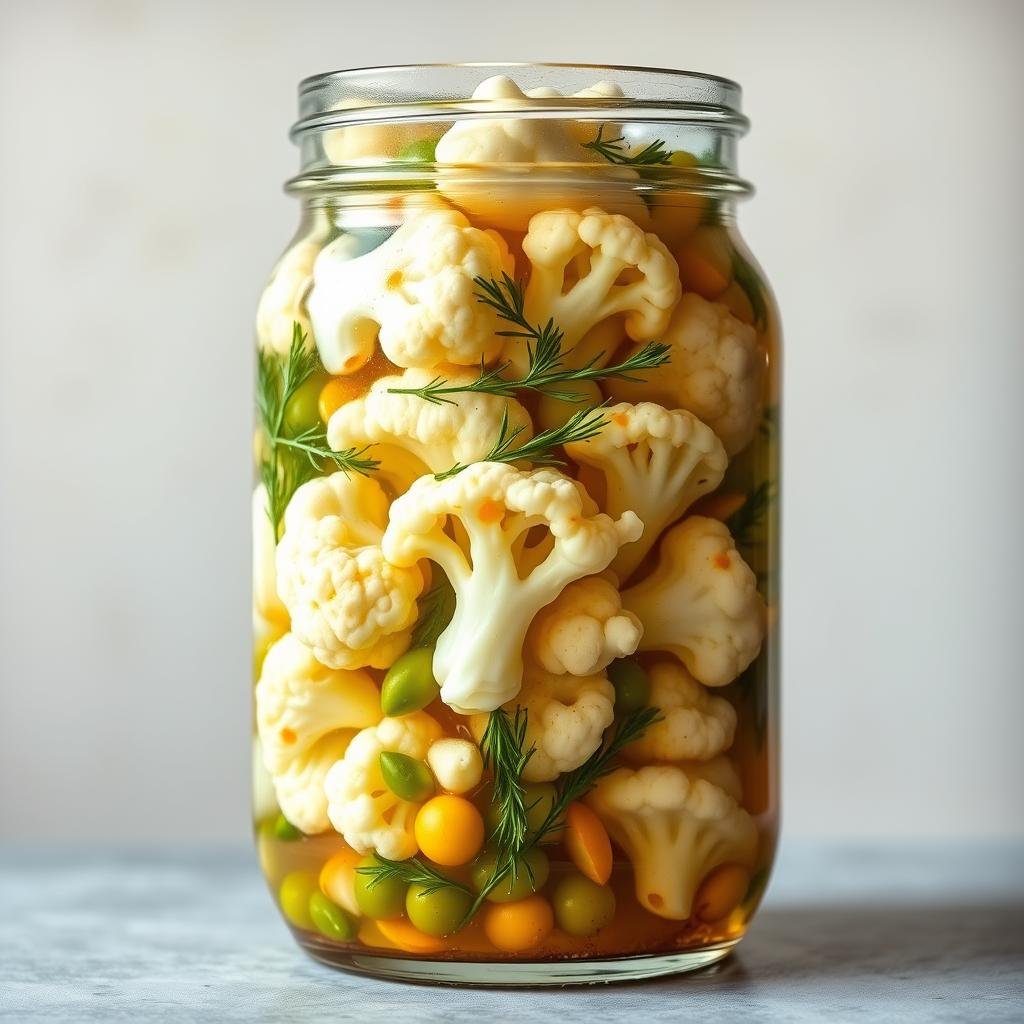
Making your own pickled cauliflower is exciting and rewarding. It combines crispy cauliflower with tangy brine. This mix is tasty and good for your gut.
Preparing the Cauliflower
Start by washing a cauliflower head well. Cut it into small florets. This makes it easy to eat and ferment evenly. Make sure everything is clean to avoid contamination.
Creating the Brine Solution
The brine solution is key to fermentation. Mix 25 grams of salt with one liter of water. This saltwater keeps bad bacteria away and helps good bacteria grow. It turns fresh cauliflower into tasty fermented veggies.
Packing and Sealing the Jar
After prepping the cauliflower and making the brine, pack the florets into a jar. Pour the brine over them, making sure they’re all covered. Add garlic and bay leaves for flavor. Seal the jar to let gases out. Open it daily to release built-up gases.
For more tips on fermented cauliflower, check out this guide on fermented cauliflower.
Fermentation Time and Conditions
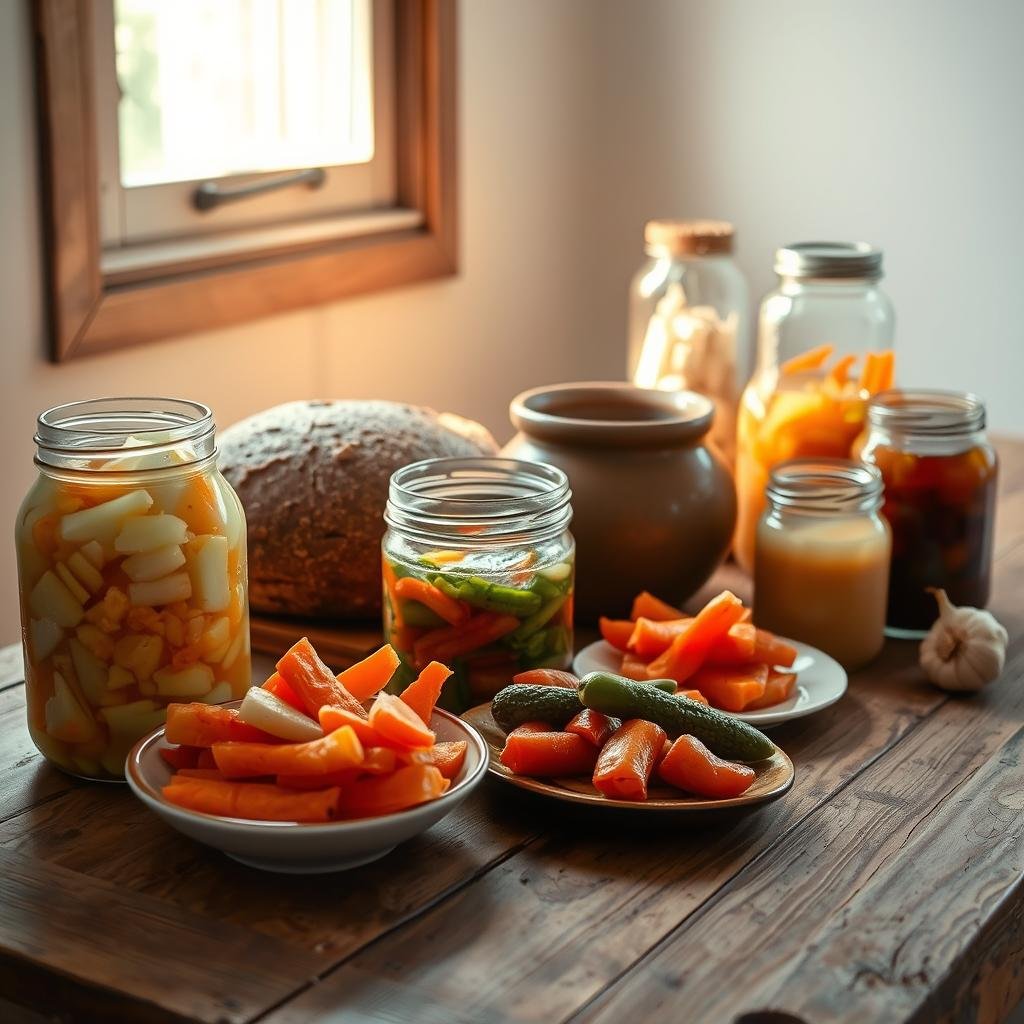
Getting the right fermentation conditions is key for tasty and healthy fermented cauliflower. For beginners, knowing the best environment makes the process easy and successful.
Ideal Temperature for Fermentation
The best temperature for fermenting cauliflower is between 65 and 75 degrees Fahrenheit. This range is perfect for the natural fermentation process. It helps beneficial bacteria grow well.
Temperatures below this range slow down fermentation. Higher temperatures can make the cauliflower too soft or sour. Keeping this temperature is important for easy fermented foods.
Signs of Successful Fermentation
As fermentation goes on, you’ll see signs that your cauliflower is doing well. Look for bubbles and a cloudy brine. These show the bacteria are working.
You should also smell a pleasant sour smell. This means fermentation is going as planned. Taste your ferment often to get the flavor just right.
How to Enjoy Your Fermented Cauliflower
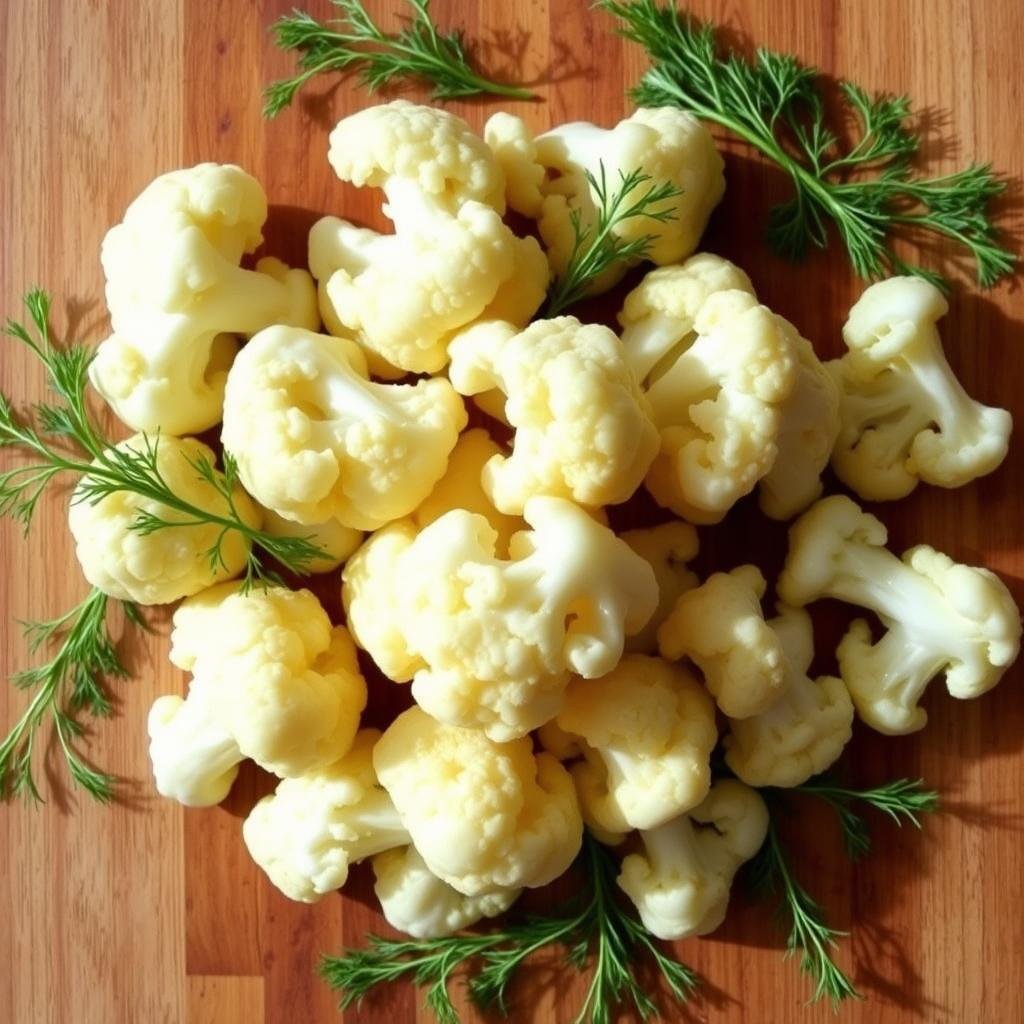
Fermented cauliflower is more than just a side dish. It’s a vibrant addition to many meals. Its tangy taste and health benefits make it a highlight on your plate. Here are some fun ways to enjoy it.
Serving Suggestions
Start by serving it as a bold side dish. It goes great with grilled meats or roasted veggies. You can also use it as an appetizer with cheese and meats, adding a zesty touch.
Incorporating into Meals
Make your meals better by adding fermented cauliflower to them:
- Salads: Mix chopped fermented cauliflower into salads for extra health benefits.
- Sandwiches & Wraps: Use it as a crunchy, tangy filling with your favorite meats and veggies.
- Tacos: Top tacos with fermented cauliflower for a tasty twist.
- Bowls: Add it to grain bowls with chicken or fish and other veggies.
Try these ideas to get the most out of fermented cauliflower. It will make your meals healthier and more exciting.
Storage Tips for Fermented Cauliflower
Keeping your fermented cauliflower fresh is key. We’ll share tips to keep it tasty and full of probiotics.
Best Practices for Refrigeration
Store your fermented veggies in a cool spot. A fridge, basement, or root cellar is perfect. These places keep the temperature steady and slow down fermentation.
Use airtight containers to keep it fresh. Check the brine often and add more if needed. For more tips, visit storage tips for fermented foods.
When you eat the cauliflower, pack leftovers tightly. This keeps it fresh longer.
For longer storage, use a stronger brine. This keeps the veggies tasty. Mix small batches into bigger containers for easier storage.
Follow these tips to enjoy your cauliflower for longer. It will stay healthy and delicious.
| Storage Tips | Description |
|---|---|
| Ideal Locations | Refrigerator, basement, root cellar |
| Airtight Containers | Prevent contamination, preserve flavor |
| Monitor Brine Levels | Ensure vegetables stay submerged |
| Reduce Air Space | Repack into smaller containers as consumed |
| Stronger Brine | Add more salt for long-term storage |
| Combine Leftovers | Merge small batches into larger containers |
Troubleshooting Common Issues
Even with careful planning, problems can happen during fermentation. We’ll look at common issues like off smells and over-fermentation. We’ll give you practical solutions to save your fermented cauliflower recipe.
What to Do If It Smells Off
An odd smell is a common problem during fermentation. If your fermented cauliflower recipe smells yeasty or egg-like, don’t panic. These smells don’t always mean it’s spoiled. But if the smell is really bad or smells like rot, throw it away.
For more help, check out troubleshooting fermentation tips online.
Fixing Over-Fermentation Problems
Over-fermentation can make your cauliflower taste sour and feel mushy. To fix it, rinse off extra brine. Also, use less salt at the start to prevent it later.
If your cauliflower is getting too fermented, put the jar in a cooler place. This will slow down fermentation.
Use jars with air-locks or gaskets and leave enough space. Open the jars every day to let out carbon dioxide. This helps avoid overflowing or exploding jars. For more tips, visit this fermentation troubleshooting guide.
Nutritional Value of Fermented Cauliflower
Fermented cauliflower is tasty and full of good stuff for your health. It’s packed with vitamins, minerals, and probiotics. These are great for your gut and overall health.
Key Vitamins and Minerals
Fermented cauliflower is full of important vitamins and minerals. One cup has about 37.4mg of Vitamin C. This is 42% of what you need every day. It helps keep your immune system strong and your skin healthy.
It also has about 25mg of calcium and 257.5mg of potassium. These help your bones stay strong and your heart healthy. Here’s a detailed look at what it offers:
| Nutrient | Amount per Serving | % Daily Value |
|---|---|---|
| Calories | 54 | – |
| Total Fat | 0.38g | 0% |
| Saturated Fat | 0.12g | 1% |
| Sodium | 232.5mg | 10% |
| Total Carbohydrate | 12g | 4% |
| Dietary Fiber | 2.1g | 8% |
| Total Sugars | 8.3g | 17% |
| Protein | 1.9g | 4% |
| Vitamin C | 37.4mg | 42% |
| Calcium | 25mg | 2% |
| Iron | 0.5mg | 3% |
| Potassium | 257.5mg | 5% |
| Vitamin D | 0mcg | 0% |
| Phosphorus | 40mg | 3% |
The fermentation process makes these nutrients easier for your body to use. For more details, check out this resource.
Probiotic Benefits for Digestive Health
The probiotics in fermented cauliflower are great for your gut. They help keep your digestive system working well. This is important for absorbing nutrients and keeping your immune system strong.
Adding fermented cauliflower to your meals can boost your health. It’s a smart way to improve your digestion and overall well-being.
Creative Variations of Fermented Cauliflower
Exploring creative fermented foods is exciting. You can make your own fermented cauliflower recipe your own. Add different veggies and spices to make it special. This way, you can enjoy a tasty meal that’s just right for you.
Adding Different Vegetables
Adding carrots, onions, or green beans to your cauliflower is a great idea. They make your dish look good and taste even better. Each veggie adds its own flavor, making every bite a treat.
Experimenting with Flavors
Try using different spices and herbs to spice up your cauliflower. Turmeric, cumin, or coriander can add a rich taste. Fresh herbs like dill, basil, or thyme bring a nice aroma. You can make your cauliflower taste like anything you want.
Getting creative with fermented cauliflower is fun. It’s good for your gut and tastes amazing. You’ll always find new ways to enjoy it.
